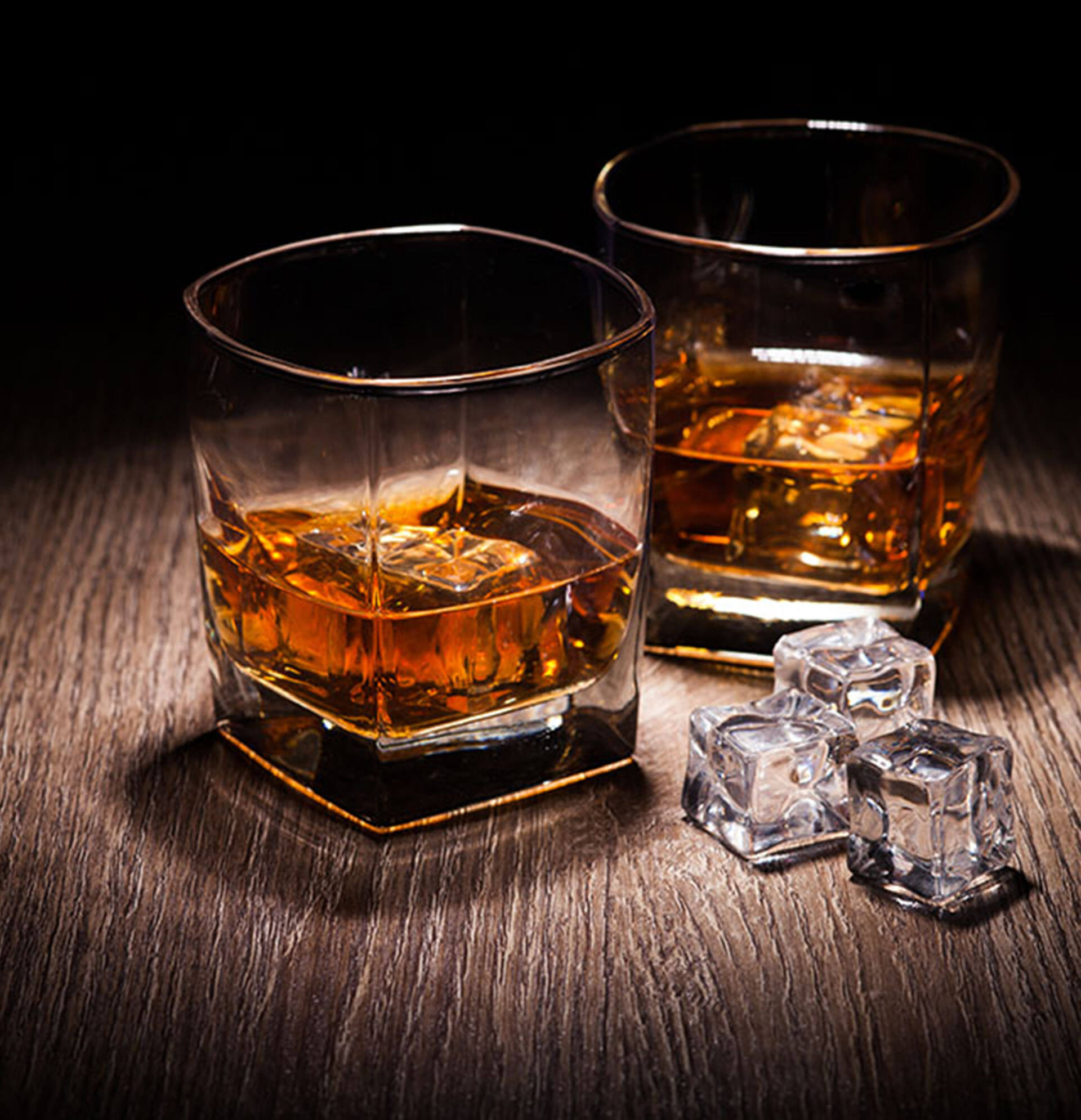

1. MALTING
Enzyme activity requires malting. Hot air created by peat burning is used in scotch whiskey to heat the barley during germination. When the organic matter breaks down in water, peat, a soft carbon-rich material is the result. Scotch whisky gains its distinctive smoky flavour from peat, whereas Indian malts use coal-burning as the source of hot air.
1. MALTING
Enzyme activity requires malting. Hot air created by peat burning is used in scotch whiskey to heat the barley during germination. When the organic matter breaks down in water, peat, a soft carbon-rich material is the result. Scotch whisky gains its distinctive smoky flavour from peat, whereas Indian malts use coal-burning as the source of hot air.

2. MASHING
Dried malt is ground into grist which is course flour. The grist is then mixed with hot water in a mash turn across multiple stages. This process transforms starches into sugar. The sweet, syrupy liquid produced by mashing is referred to as wort.

3. FERMENTING
Fermentation begins when the wort is cooled to 20 degrees Celsius and fed into washbacks. Yeast is introduced to the process and consumes sugars, producing alcohol as well as trace amounts of other compounds. The wash froths ferociously and carbon dioxide is created throughout this process. The fermentation process takes a few days.

4. DISTILLING
Malt whisky production is significantly influenced by the type, shape, and size of the distillation pot. As alcohol and other compounds vaporise, the still is heated to a temperature below the boiling point of water. The distillate then passes through large copper coils submerged in cold water allowing for the condensing of vapour into liquid.

5. MATURING
The distillates are evaluated and tested by our stillman, after which the distilled spirit is reduced to mature strength and then moved into casks. During maturation, the whisky becomes smoother and picks up flavour and colour from the casks. Some of the higher alcohols undergo ester and other complex compound formation at this stage, which gently improves the whisky's distinct flavour character.

6. BLENDING
During blending, the right ratios of various malts and whiskies are combined. Spices, fruity notes, and other ingredients are admixed to create a blend's unique flavour. The necessary amount of caramel mix is then added to get the desired hue. As a last step, our master blender accredits the finished mixture.

2. MASHING
Dried malt is ground into grist which is course flour. The grist is then mixed with hot water in a mash turn across multiple stages. This process transforms starches into sugar. The sweet, syrupy liquid produced by mashing is referred to as wort.
3. FERMENTING
Fermentation begins when the wort is cooled to 20 degrees Celsius and fed into washbacks. Yeast is introduced to the process and consumes sugars, producing alcohol as well as trace amounts of other compounds. The wash froths ferociously and carbon dioxide is created throughout this process. The fermentation process takes a few days.
4. DISTILLING
Malt whisky production is significantly influenced by the type, shape, and size of the distillation pot. As alcohol and other compounds vaporise, the still is heated to a temperature below the boiling point of water. The distillate then passes through large copper coils submerged in cold water allowing for the condensing of vapour into liquid.
5. MATURING
The distillates are evaluated and tested by our stillman, after which the distilled spirit is reduced to mature strength and then moved into casks. During maturation, the whisky becomes smoother and picks up flavour and colour from the casks. Some of the higher alcohols undergo ester and other complex compound formation at this stage, which gently improves the whisky's distinct flavour character.
6. BLENDING
During blending, the right ratios of various malts and whiskies are combined. Spices, fruity notes, and other ingredients are admixed to create a blend's unique flavour. The necessary amount of caramel mix is then added to get the desired hue. As a last step, our master blender accredits the finished mixture.
